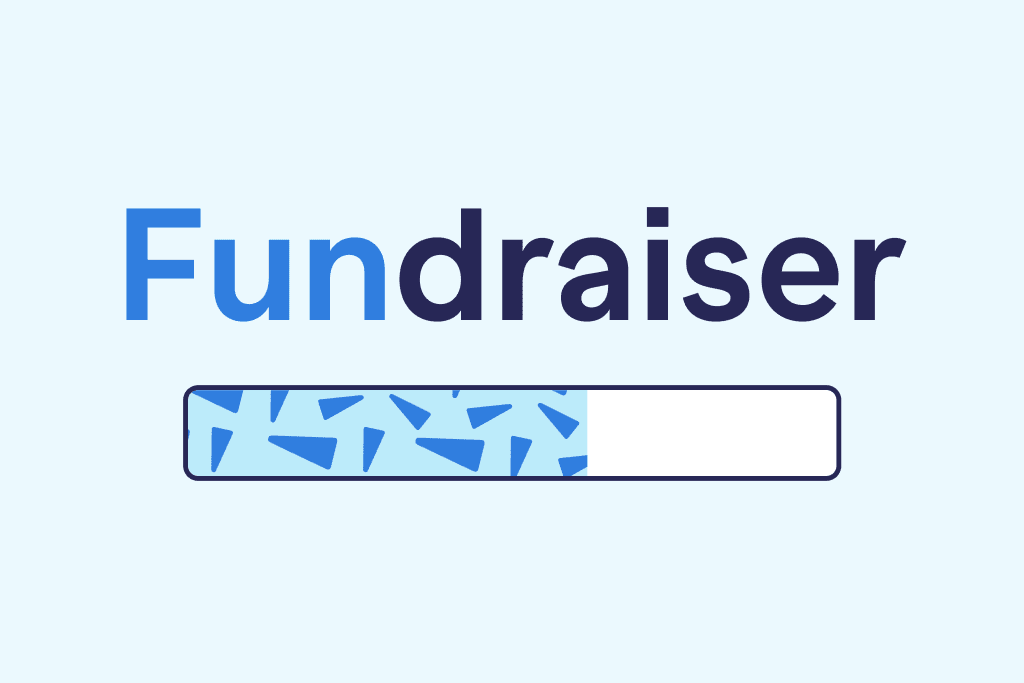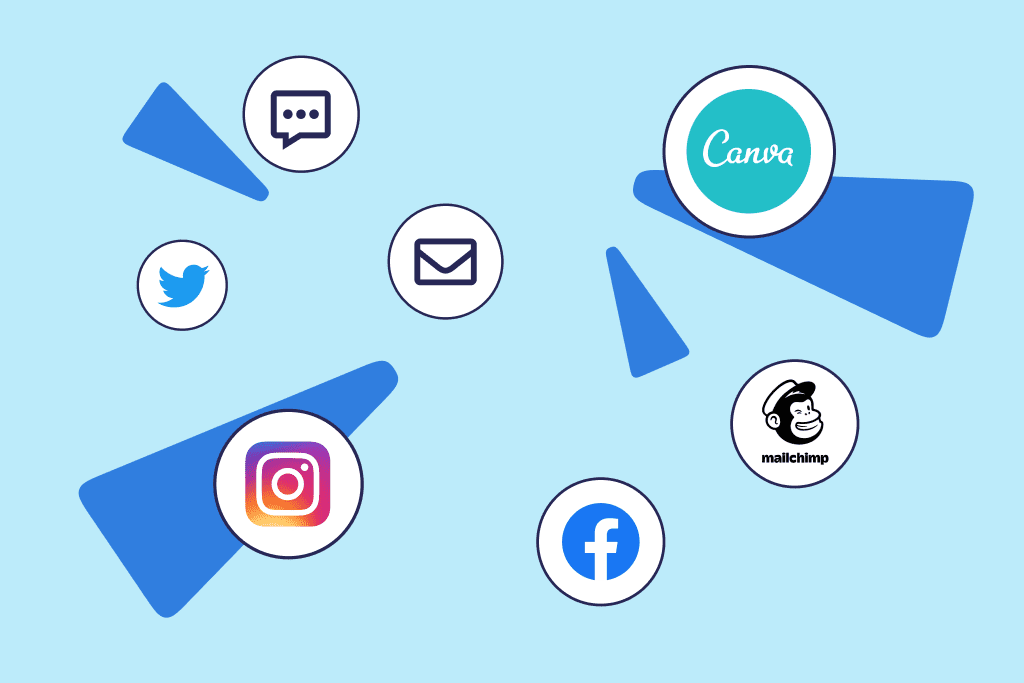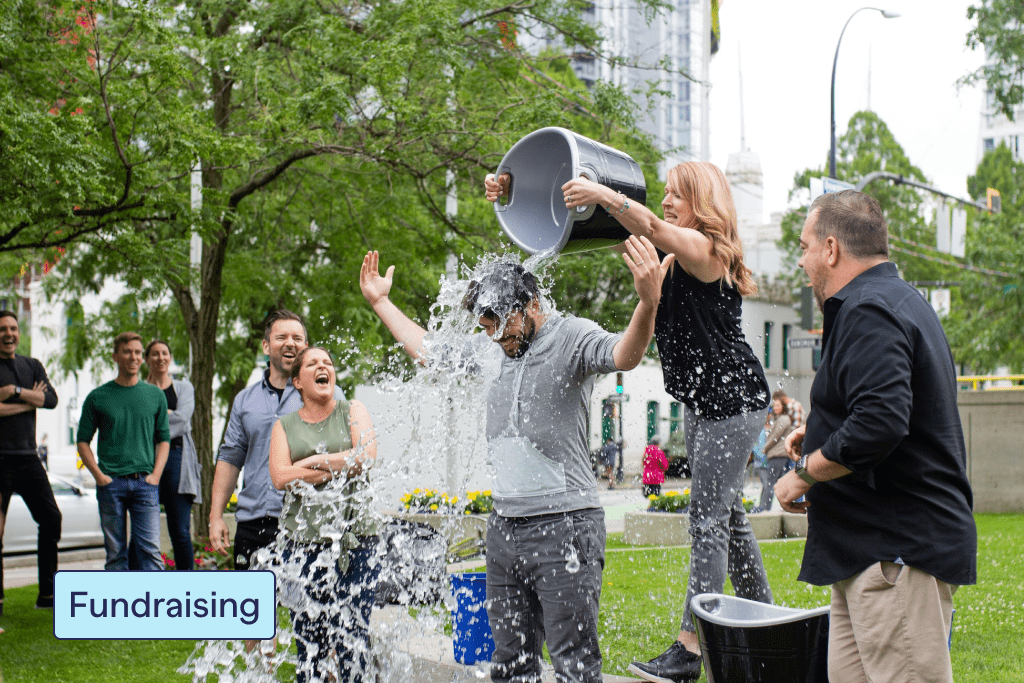Whether you’re a nonprofit raising money for a nation-wide cause or a local school raising money for classroom supplies and field trips, the entire fundraising experience has the same foundational principles. This means that no matter who’s fundraising or what you’re fundraising for, you’re just a few steps away from crushing your goals!
So, let’s get right into showing you how to raise money for any cause.
Step #1: Let the Creative Juices Flow
You can’t spell fundraiser without “fun”, which is exactly what your goal should be with all of your campaigns! Yes, you want to put on a fundraiser that has crazy potential to raise a lot of money, but in order to do that, it needs to be something people will actually enjoy. It has to be something that people would have interest in, let alone donating their money to.

When you’re in the planning stages of your fundraising campaigns, it’s essential that you put yourself in the shoes of the donor. Consider questions like:
- Would I spend my free time at an event like this?
- What would make me want to participate in a charity fundraiser?
- What kinds of things would encourage me to attend something like this?
- Would I bring my family to this fundraiser?
You can start by considering different fundraising experiences–you know, something a little more outside-the-box than crowdfunding! We’re talking fundraisers like:
- Raffles – where you raffle off different prizes for donations
- Sales – where you sell items for donations
- Events – where you sell tickets for donations
- A-Thons – where you have participants pledge for donations
The good news is that when you use an online fundraising platform, like RallyUp, you can easily throw more creative fundraisers like these with ease! Remember, the more memorable, the better.
Creative Fundraising Ideas to Inspire You
There is no shortage of fundraising ideas out there. One thing to think about is the time of year. Are there any holidays coming up, or new seasons? You can align the theme of your fundraiser to the time of year to make it even more fun.

If you need a little bit of inspiration, these might get your wheels spinning a little bit:
- Date Night with an Athlete for college sports teams
- A Beach Clean Up Event for environmental charities
- All Things Pumpkin Bake-Off for the fall season
- A Fancy Dress Race for football teams
- A Guess-That-Go A-Thon for Halloween
The sky really is the limit when it comes to all the different fundraisers you can do. And it makes a world of a difference when you use the tools and resources available to you to make your life easier!
Step #2: Leverage Your Resources
When you’re trying to figure out how to raise money for any kind of cause, creativity is one thing, but, tapping into the resources available to you is another! Any area where you can be more efficient by saving time, or money, is your golden ticket to success. If it can make your life easier, why not take advantage of it?
A Solid Fundraising Platform
Traditionally, fundraisers have been pretty manual. And we’re sure you know that already! There’s always been lots of pen to paper, right? Not only that, but somewhat of a limit to your reach and the types of fundraisers you can easily pull off.
Fortunately, online fundraising platforms exist to solve some of those problems. There are quite a few out there, but you’ll always want to look out for ones that:
- Give you the ability customize the look and feel of your fundraiser
- Give you the flexibility to choose different types of fundraisers
- Are able to easily collect payments from donors for you
- Provide a seamless experience for your donors to donate
- Don’t charge you fees to use their services
Just a little fun fact, RallyUp’s online fundraising platform does all of these things and more. We’re basically a one-stop shop for your fundraising needs and don’t charge you a dime.
Free (Or Low Cost) Marketing Tools
Once you’ve got your fundraiser all figured out, you need efficient (and thrifty) ways to spread the word! Marketing your fundraiser is almost just as important as the fundraiser itself. How are people going to participate (aka donate) if they don’t know about it?
This is another perfect opportunity to utilize the resources that are out there just waiting for you to come knocking at their door. A lot of marketing tools are free and really pack a punch when it comes to value.

Some of our favorites are:
- MailChimp – A free email marketing platform that allows you to create beautiful emails in a super easy editor to send to your entire database at once. Their drip campaign functionality allows you to set up custom, automated email campaigns that you can set and forget.
- Canva – A free, online design tool where you can make basically anything and everything, from social posts and flyers to brochures and postcards. They have thousands of really nice templates to choose from so basically no design skill is actually needed from you.
- Social Media – Let’s not forget that social media is also a free resource! And a super effective one considering that people spend an average of 2.5 hours on social media every day. Your social media strategy should be one of the most prioritized marketing initiatives for your entire campaign. Post on all your platforms, every day, and engage with your followers the whole time.
Your Helpful Community
When we talk about leveraging the resources available to you, they don’t always have to relate directly to technology. You also have human resources you can lean on to be more efficient, save time, and money too! Fundraisers need all the manpower they can get.

You can always rely on:
- Your volunteers – No matter what kind of help you may need for your fundraiser, you should always reach out to your volunteers for a helping hand. It’s a good idea to be recruiting volunteers all throughout the year so you can have a good amount on standby waiting to help!
- Local community businesses – A lot of successful fundraisers involve some sort of prize or reward for donors who participate! Like an a-thon fundraiser, for example, where people are competing against each other for the top spot. In these situations, you can reach out to local businesses and see if they’d be willing to donate their products or services to use as prizes, rewards, or even raffle items.
- Your staff: It’s all hands on deck for your fundraising efforts! Which includes your staff. Tap in as many people that are willing and integrate them into different areas of your campaign based on their individual strengths. To encourage the most participation, consider offering some extra time off or order some pizzas when you all work on the fundraiser together.
Step #3: Focus on Relationships
Relationships are important in any business, but they’re especially important when it comes to the nonprofit and fundraising world. You’re asking people to give their hard earned money away to a good cause! So, there should absolutely be an emphasis on creating meaningful relationships that lead to lifelong donors.

How exactly do you go about doing that?
- Always say thank you – No matter if your donors fork over $5 or $5,000, a genuine thank you should always be sent their way! It needs to be personal and can take the form of a letter mailed right to them, a shout out publicly on social media, or even a hand-delivered ‘thank you’ package!
- Ask for their input and listen – Your donors are passionate about your cause, so their input should be valued. Lean on them when you’re asking for feedback about a fundraiser, your actions as a nonprofit as a whole, or when you’re brainstorming for new ways to raise funds. And then, implement the things they suggest!
- Tell them about the difference they’re making – For donors, the best part about supporting a charitable cause is knowing that their contribution is going to make a difference. So, tell them exactly how far their individual donation goes and how much of an actual difference it’s making! It’ll make them feel so special.
What If You Have A Small Budget and Need Cash ASAP?
There are moments when your nonprofit needs extra cash, like, yesterday. We’ve all been there. Fortunately, there are tried-and-true methods to raise money fast. Yes, even if you’re starting out with a small budget.
In this section, we explain how to raise money fast with just a little bit of prep work and a whole lot of hustling.
Method #1: Apply for a grant.
Many nonprofits rely on grant funding at some point. Public researchers and hospitals, for instance, couldn’t stay afloat without stacks of grants. It sounds a little intimidating at first, but while grant writing involves some serious effort, it’s not rocket science. If you do your research and take the right steps, applying for a grant is a stellar way to get the cash you need–stat.

What’s a grant?
In the simplest terms, it’s financial support from a private or governmental institution for a specific project, person, activity, or program. Grantmakers tailor their financial support to the nature of the scheme you’re applying for. If you’re building a particle accelerator, you’ll need to score billions of dollars. If you’re building a neighborhood animal shelter, you’ll be looking for a lot less.
Why apply for a grant?
Aside from the obvious–free money, duh–a grant enhances your organization’s reputation. The ability to attract and secure funding from big shot institutions sends a loud signal to your supporters that your mission is worth investing in.
What types of grants are there?
Grants take two main forms.
- General Purpose Grants: A general purpose, or operating support, grant goes toward the cost of keeping your nonprofit humming on a day-to-day basis. It’s an open-ended gift, meaning you can use it to pay your staff, bankroll your next craft sale, or just save it for a rainy day.
- Program Support Grants: Grantmakers award program support grants for a specific activity. This is a restricted form of funding, meaning that you can only use it for the project you applied for, and only within a specific time frame. Let’s say you apply for a grant to run an after-school art program. You’ll receive a certain amount to be used exclusively for artsy activities, from January to May, for example.
Sounds great, how do I get a grant?
- Do your homework: Obtaining a grant begins with research. Consider your nonprofit’s needs, location, and program type. Then narrow your search radar to foundations that have a strong history of supporting your cause. Many grant organizations only award funding in specific geographic locations, or for certain types of programs.
For example, the Stewardship Foundation prioritizes grants to faith-based organizations operating in Washington, while the Frederick W. McCarthy Family Foundation prefers to award those programs that are dedicated to educational organizations around the globe. Use free grant databases like https://grantgopher.com/Grants-for-Nonprofits and grants.gov to search for available grants; paid databases like GrantWatch offer more options.
- Write a grant proposal: The actual process of putting together a grant proposal can seem daunting. After all, that’s why organizations hire certified grant writers, right? Yes and no. You can certainly go the professional route, and there are plenty of grant writers to choose from. But if you’re dedicated and determined, you can write the thing yourself. Yes, you can.
Keep the following in mind:
- Tailor your proposal to the institution. Don’t just blast out a cookie cutter proposal to every grantmaker in the country and expect to get a reply. Does the foundation jive with your mission? Great, explain why. If you admire what they stand for, say so–briefly!
- Read the instructions. Most funders will have straightforward, detailed requirements for how to apply. Follow their instructions to the letter, don’t cut corners, and submit way before the deadline.
- Have clear dates and budgets. Does your organization eat through $300 in heating every month? Do you intend to have that historical house museum re-painted by Christmas? Be very, very clear about costs and timeframes.
- Include a cover letter. First impressions count. Include a simple, to-the-point letter that summarizes your goals and is addressed to a specific person. Never send letters that open with “To Whom It May Concern” or “Dear Sir or Madam” – it’s unprofessional and shows that you didn’t do your research.
- Put yourself in their shoes. Grantmaking bodies receive thousands of applications. Make it easy on them. Don’t make your reader hunt through your documents for a budget breakdown or wade through dozens of testimonials. Be clear, straightforward, and concise.
Method #2: Apply for Corporate Sponsorship
Like grants, corporate sponsorships entail financial support for your organization’s projects and goals. The main difference is that corporations show love to nonprofits because they have economic interests at stake.

While companies are often leaders in corporate philanthropy, they’re still businesses that are financially responsible to employees and stakeholders. They enter a relationship with your organization because they foresee an obvious benefit to their bottom line, whether in the form of increased awareness of their brand or boosting their clientele base. So, your job is to make it worth their while to team up with you!
Corporations give to nonprofits in different ways. They can donate one lump sum: for instance, they’ll agree to cover the cost of your Winter Fundraising Gala. Or a business may engage in an ongoing relationship with your nonprofit, providing financial contributions on the regular. Obviously, both options will benefit your mission, but an LTR with a corporate sponsor is the dream.
Sounds great, how do I get sponsored?
- Gather intel. Everything good begins with research. It may sound obvious, but it’s critical to take a good hard look at which corporations have goals that align with yours. If you’re running a canned food drive, it makes sense to approach grocery stores, not tech startups. On the other hand, if you’re working to improve computer literacy in underserved communities, for example, then reaching out to a tech company makes perfect sense. Find out what causes the company has sponsored in the past, or if they participate in any charity-related events.
- Make the ask. We know, this part can be weird. The more often you do it, the easier it gets.
- Reach out. The best way to ask for a donation is directly. Write a letter to a specific individual within the organization. Unless the company is very, very small, you shouldn’t be contacting the CEO or even the CFO. Scour their website, their newsletters, and their public statements to figure out exactly who’s running the show when it comes to corporate giving.
- Why you? Your letter should be simple and engaging, and include your main message, your audience, your impact, and why helping you out is a good idea. Remember, a corporation lends a hand because they see a clear benefit to their bottom line. Spell it out for them. Will you include their name on your event programs or sports jerseys? Will you host all your meetings in their restaurant? Will their contribution qualify them for a tax benefit? Put yourself in their place and ask: what’s in it for me? If you can’t immediately come up with at least three wins for the company, go back to the drawing board.
- Maintain the relationship. This part is uber important. If a company agrees to help you out—even if they donated a box of pencils—shout it from the rooftops. Include them in your blog, thank them on your social media site, and post updates that mention their name on your fundraising platform. The more exposure you offer, the more motivated they’ll be to support you in the future. Don’t forget that having a corporation in your corner, no matter how small its contribution, makes your organization look more legit. It’s a win-win. So, be grateful and always send thank you notes!
Method #3: Quick-and-Easy Fundraisers
While some fundraisers need a huge budget just to get off the ground, the quick-and-easy ones just take a dedicated team of volunteers and a bit of planning. Here are a few unique fundraising ideas to get you started.

- Live Stream an Activity: Do something for 24 hours and stream it. 12 hours works, too. What should you do? Anything. Seriously. It can be challenging–think tap-dancing or playing bongo drums–or super easy, like reading aloud from Alice in Wonderland. You can perform your activity alone in your living room, or have volunteers take turns. Collect pledges based on hours, pages, or laps.
- Share Your Skills: Take a skill set inventory in your organization. Can anyone play guitar, make origami flowers, or cook a divine pot of chili? Is anyone a whiz at Photoshop? Did anyone play football in college or speak a second language? Pool your talents together and organize a skills workshop. Pick an entire day—or a weekend!—and ask for donations from supporters in exchange for teaching them something fun. This works both in-person and online.
- Get Crazy: This is a hit with kids. Get the word out on your social media page that your team will do crazy things for sponsorships. How much will donors give to see you stand on your head? Belt out all the words to a Beatles song? Keep three oranges in the air for five minutes? The sillier the better. Best of all, you can sell tickets to your Mad Hatter Show and host it online, via platforms like Zoom, Google Hangouts, or fundraising platforms. It gets everyone laughing and won’t cost you a penny.
- Plan A Parents’ Night Out: Moms and dads deserve a break sometimes. Recruit a team of volunteers and scope out a local neighborhood space, like a school gym or a community center. Organize a night of fun activities for kids of all ages, from building Lego towers, to playing dodgeball, to reading ghost stories. Provide healthy snacks or a popcorn machine. Invite parents to drop off their children for the evening, charging a pre-advertised fee (e.g. $30 per visitor). To build anticipation, have families cast their vote on your fundraising page about which movies to screen, which board games to play, or what books to read. If the night is a big hit, you can plan one every month!
Now, Roll Up Your Sleeves and Raise That Cash
Starting to feel like you know how to raise money for any kind of cause now? Good! That’s exactly what we were aiming to do. And if you want to make your life a whole lot easier, consider leveraging a killer online fundraising platform, like ours, that you and your donors will love.
